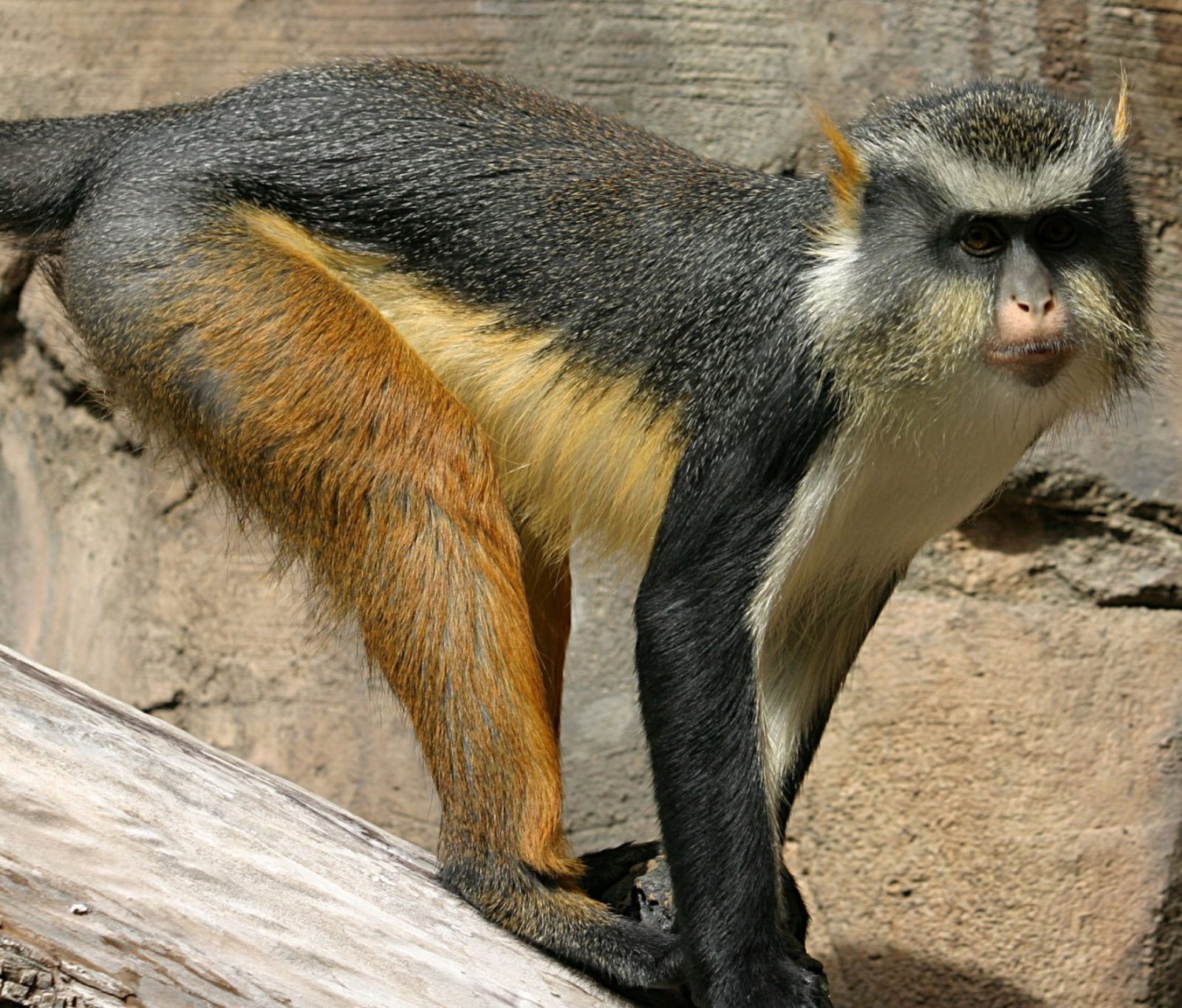
Wolf's Mona Monkey
Wolf’s mona monkey, also called Wolf’s guenon, is a colourful Old World monkey. It is found in central Africa, primarily between the Democratic Republic of the Congo and Uganda. It lives in primary and secondary lowland rainforest and swamp forest.
The species was first described from a living specimen in the Zoological Garden at Dresden. It was brought in 1887 by Dr Ludwig Wolf from somewhere in central west Africa. The species was described in 1891 and named after the collector. This specimen died in October 1891 and the skeletal characteristics were described in 1894.
Wolf’s mona monkey is in the mona grouping within the genus Cercopithecus (you can see the other species in this grouping on the former page. Wolf’s mona monkey was previously considered a subspecies of the crested mona monkey. This primate family lies within the tribe which includes baboons, mangabeys, and macaques. Common characteristics include cheek pouches, low and rounded molar cusps, and simple stomachs; all adaptations to a frugivorous diet.
Wolf’s mona monkey has two subspecies which are separated by a large area of swamp forest:
- C. wolfi wolfi, found between the Congo and Sankuru Rivers.
- C. wolfi elegans, found between the Lomami and Lualaba Rivers











